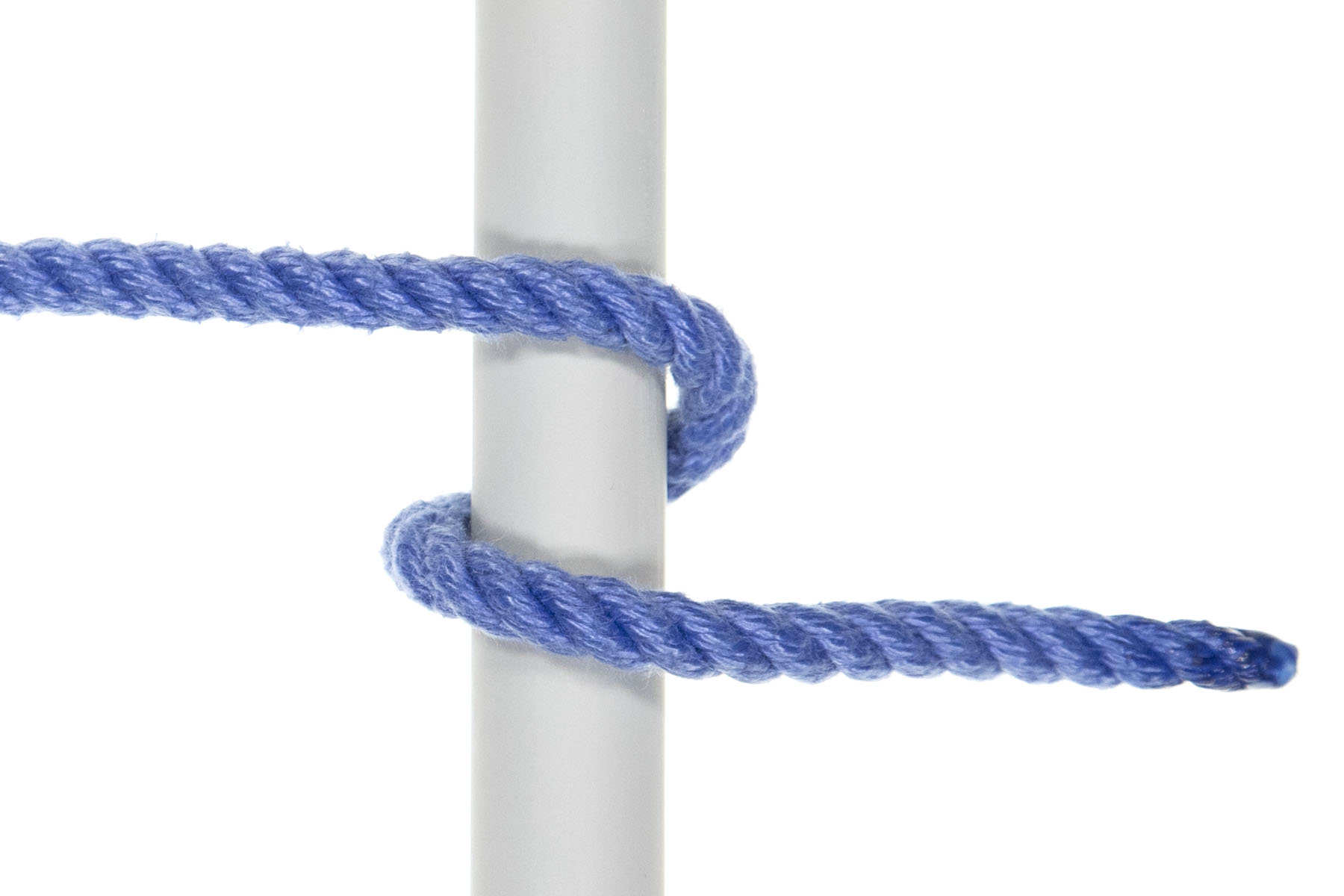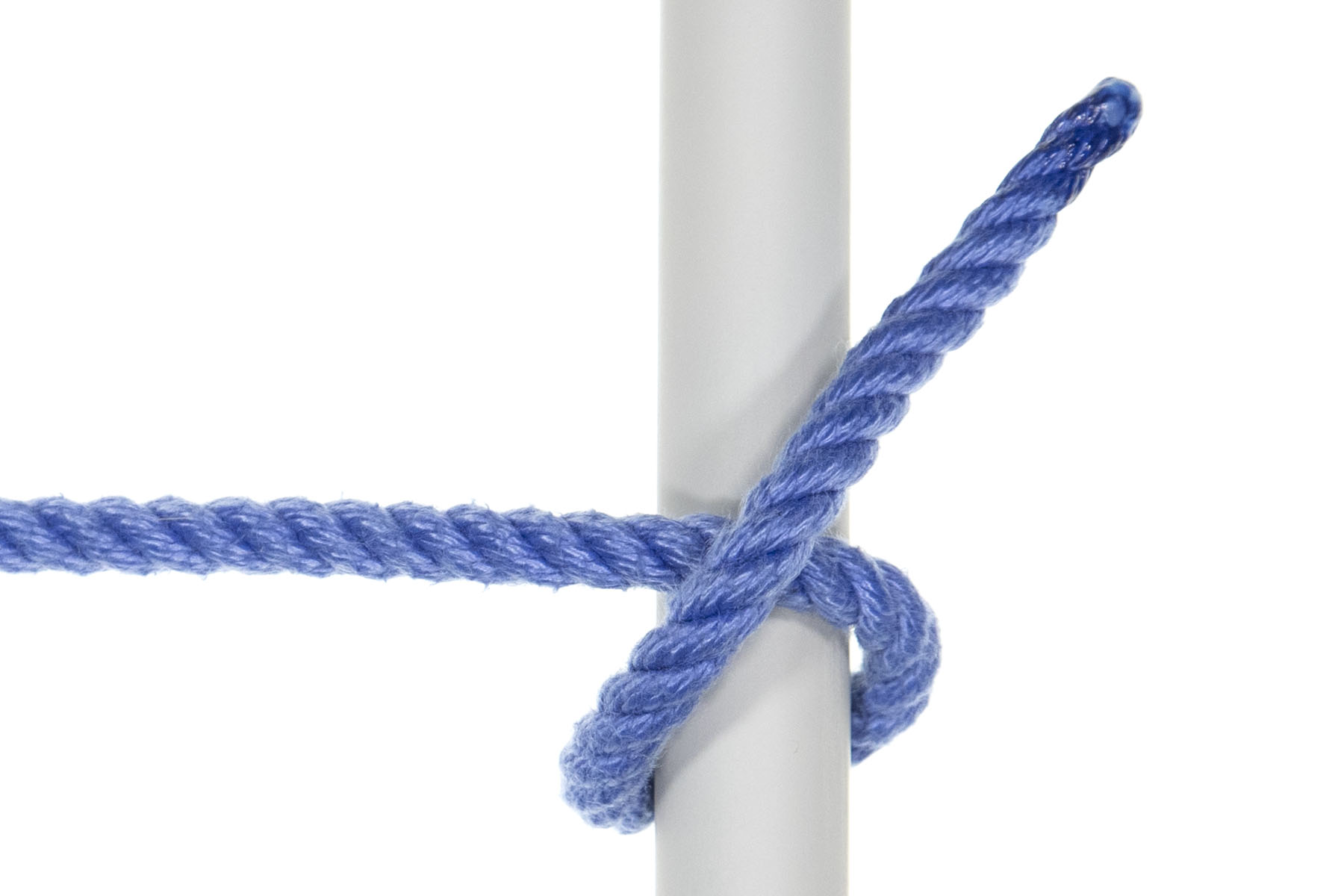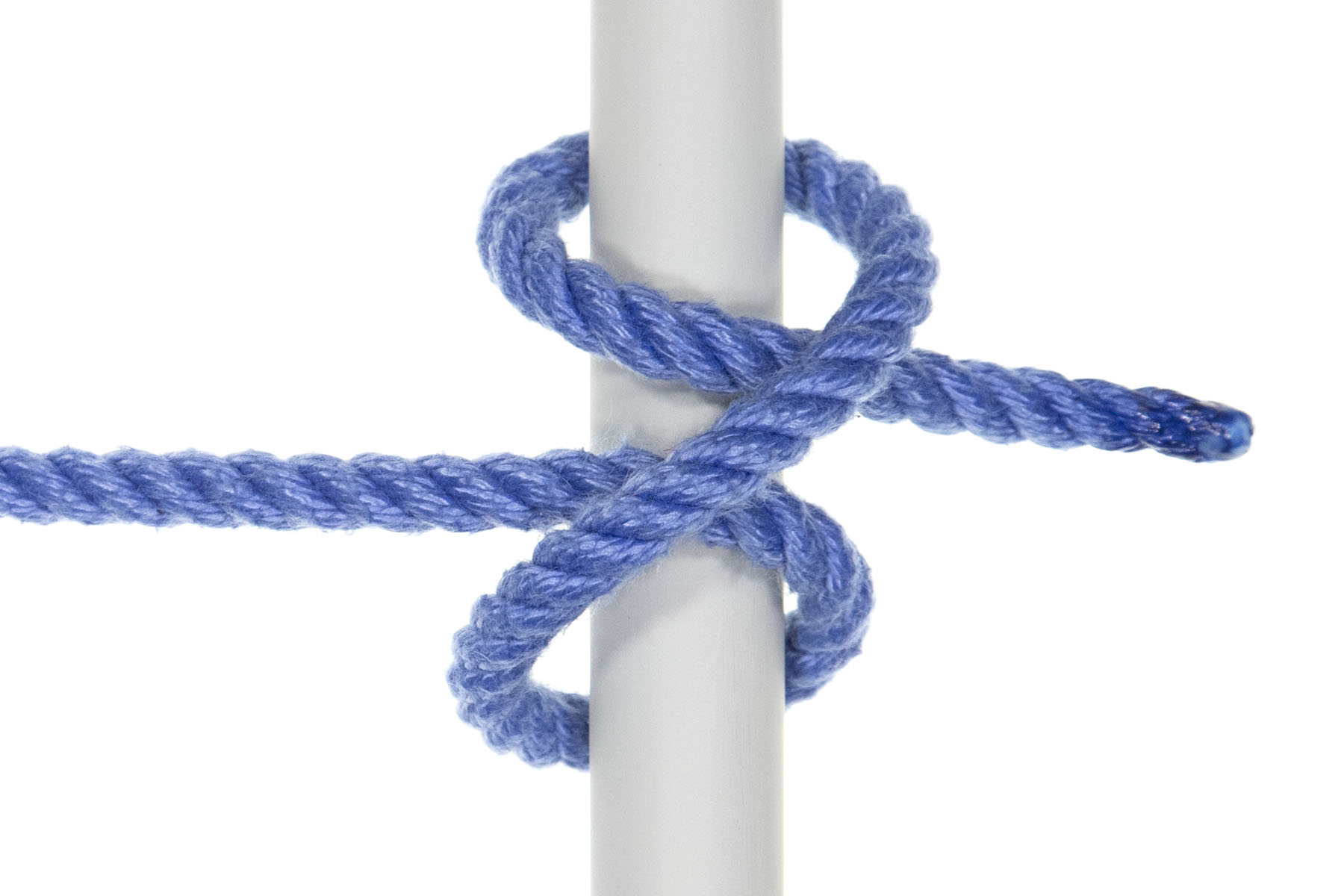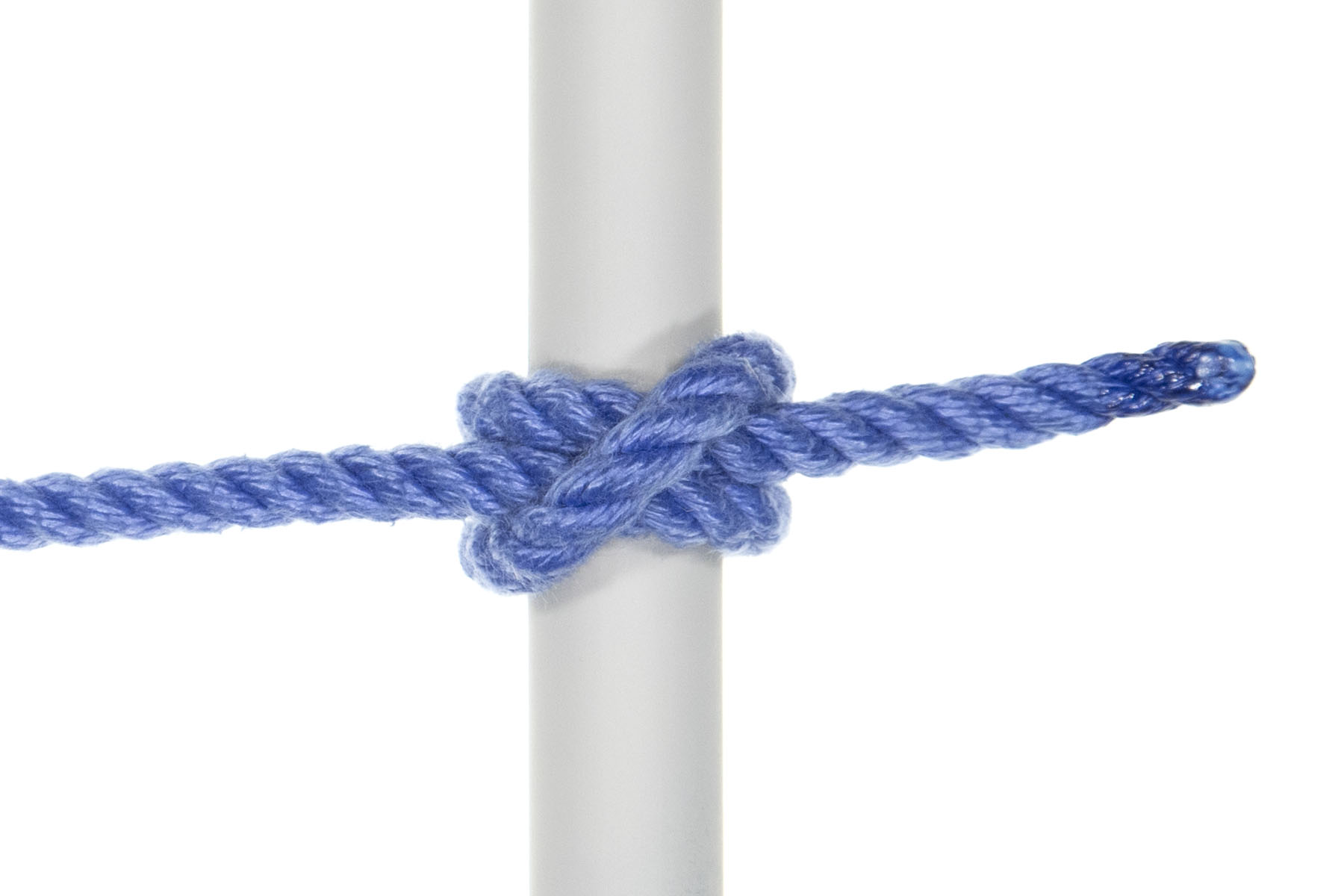Clove Hitch

The clove hitch is undeservedly popular, probably because it looks pretty and is easy to tie.
When to use it
The clove hitch is a good crossing knot. We’ve built rock-solid 6,000 square foot structures that relied heavily on it.
For any other purpose, however, it’s probably the wrong knot.
The Clove Hitch (ABOK # 1245, p 224) was, originally, included here with the intention of condemning it. It does have two giant faults: it slips and, paradoxically, can also bind. It should be deeply distrusted when used by itself.
- Animated Knots by Grog
Step by step

1Go over and around the pole, making a full 360° turn.

2Cross the working end over the rope on top of the pole.

3Go under and around the pole, passing the working end under itself.

4Snug the knot.
Notes for nerds
References and naming
This knot is ABOK # 1245